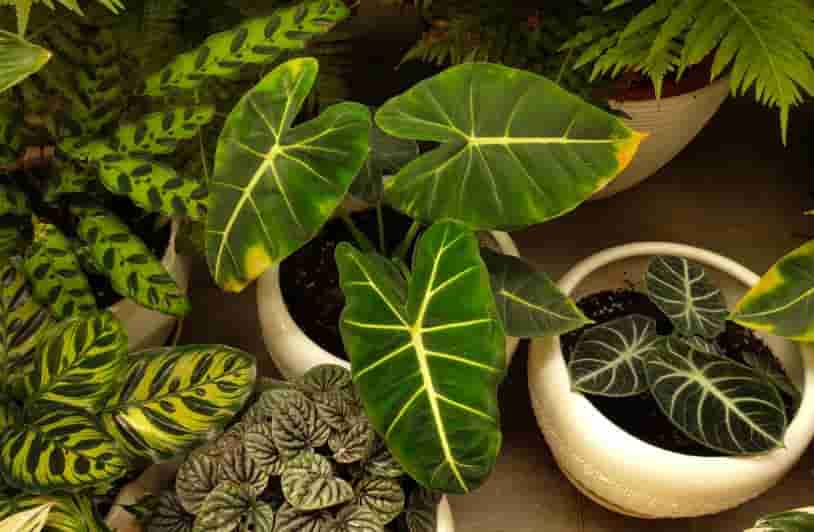Description
The philodendron superb is native to Ecuador’s jungles, where it grows in the understory and climbs trees. Because of their origin, they can grow in low-light situations, making them ideal for households with limited access to bright, direct sunshine.
Is the Philodendron Splendid uncommon?
Philodendron superb is a very rare plant. It has the typical philodendron heart-shaped leaves, but the leaves are large, bold, and velvety, with gorgeous cream-colored veins. It’s a cross between the Philodendron verrucosum and the Melanochrysum. Each leaf can reach a width of a foot and a length of two feet.
Plants grow four to six feet tall, but due to their huge leaf size, they require more area to spread out than some of the smaller philodendron splendid mature
Because of its scarcity, it is difficult to find locally in stores and is frequently out of stock online through retailers such as Etsy. A tiny to medium-sized potted plant will set you back $100 or more.
A beautiful philodendron houseplant in a terracotta clay pot.
Superb Philodendron Maintenance
Philodendrons are native to tropical regions where temperatures are regularly warm and humidity levels are generally high, making them ideal houseplants. The most important component of caring for them indoors is ensuring they get enough indirect sunlight or supplemental light. You must also ensure that they are not overwatered.
Requirements for Light
Because this plant family is endemic to the understory of tropical forests, it thrives in bright but indirect sunshine. They like at least six hours of diffuse sunshine per day, but 10 hours or more is preferable. When given enough light, they grow huge leaves with exquisite veining.
Plants can tolerate no more than two or three hours of direct light every day. Too much direct sunshine burns the lovely foliage. If all of your windows get direct sunlight, put a curtain to soften the rays or place your plant three to six feet away from the window. Too much direct sunlight will burn the foliage, although plants can handle an hour or two.
On the other hand, too little sunshine causes the leaves to remain small and the plant to grow lanky and leggy. Most homes do not receive enough sunlight, particularly in the winter. If your plant isn’t flourishing well, consider purchasing a supplemental grow light to provide it with an extra dosage of sunlight every day.
Temperature in the Environment
Splendids thrive in temperatures ranging from 55°F to 80°F, especially when temperatures decrease at night, mimicking natural changes observed outdoors. To achieve this, keep the temperature low at night till early morning, then raise it during the day. Keep plants away from outdoor doors that open and close regularly to avoid sudden temperature changes.
Humidity Relative
Philodendrons, which are endemic to tropical forests, also prefer high humidity levels. They flourish in relative humidity ranges of 80-90%. If your home is dryer than this, you can increase humidity by clustering several plants together, running a humidifier nearby, or placing all containers in a pebble tray half full of water.
Watering Requirements
If you’ve ever battled to keep a plant alive because you forgot to water it, try planting this philodendron! Philodendron superb, as well as other philodendrons, pothos, and monstera, prefer dry soil. Allow half of the potting soil to dry before fully watering the container until excess water flows out the bottom drainage holes.
Never leave your philodendron in a saucer full of water. Overwatering causes root rot in these plants, which can kill them swiftly once signs appear in the foliage.
Fertilizer Routine
When your houseplants are actively developing in the spring and summer, fertilise them once a month. A balanced liquid fertiliser or something specifically designed for houseplants are also excellent choices. Follow the label’s mixing instructions or dilute to roughly half the recommended strength. When the weather is colder in the fall and winter, you don’t need to fertilise.
Splendid Philodendron Pruning
This philodendron rarely requires trimming, however you may always prune it to manage its shape or size. When pruning, use sharp, disinfected scissors to remove leaves or cut down vines. The stems can be pinched with your fingernails, but the sap may irritate your skin.
Although dead leaves can be removed, the plant will naturally shed them as new ones grow. Remove any foliage that appears to be unhealthy or diseased. Regular pruning will encourage your plant to grow fuller and busier rather than higher.
Pest and Disease Issues
Philodendrons are susceptible to aphids, spider mites, scale, fungus gnats, and mealybug infestations when cultivated indoors. Scout your plant for pests on a regular basis, and treat the entire plant with neem oil or insecticidal soap as soon as an infestation is discovered. The only common illness to be concerned about is root rot, which can be avoided with careful watering.
You can learn more about philodendron splendid mature on purple herat plant

